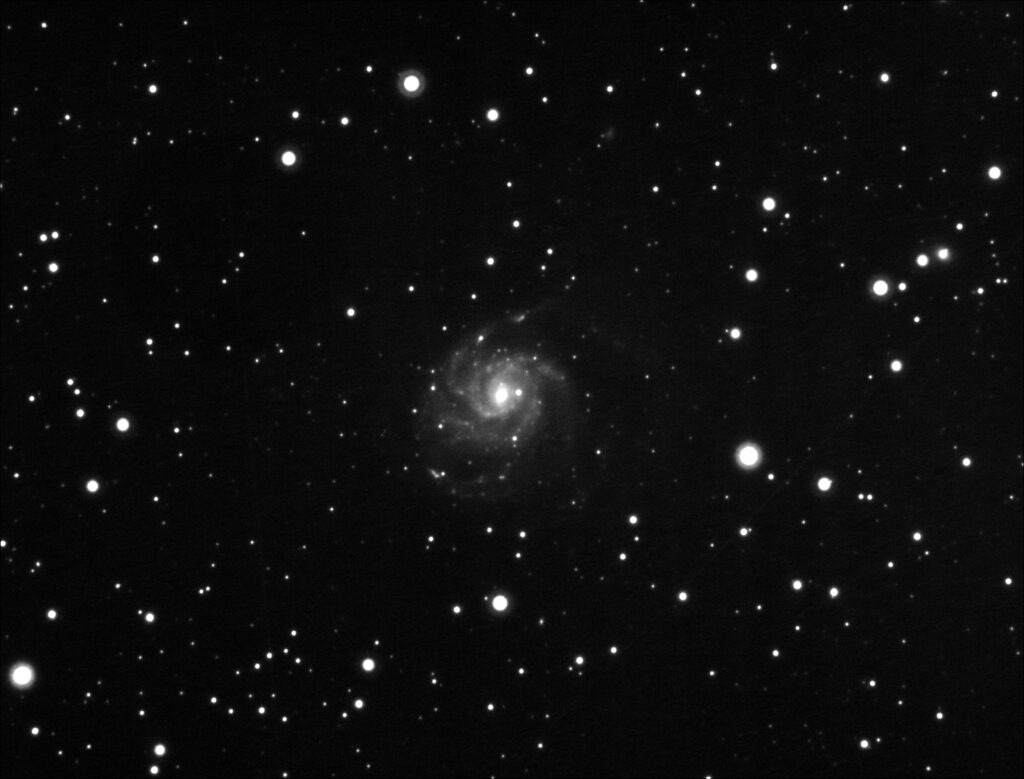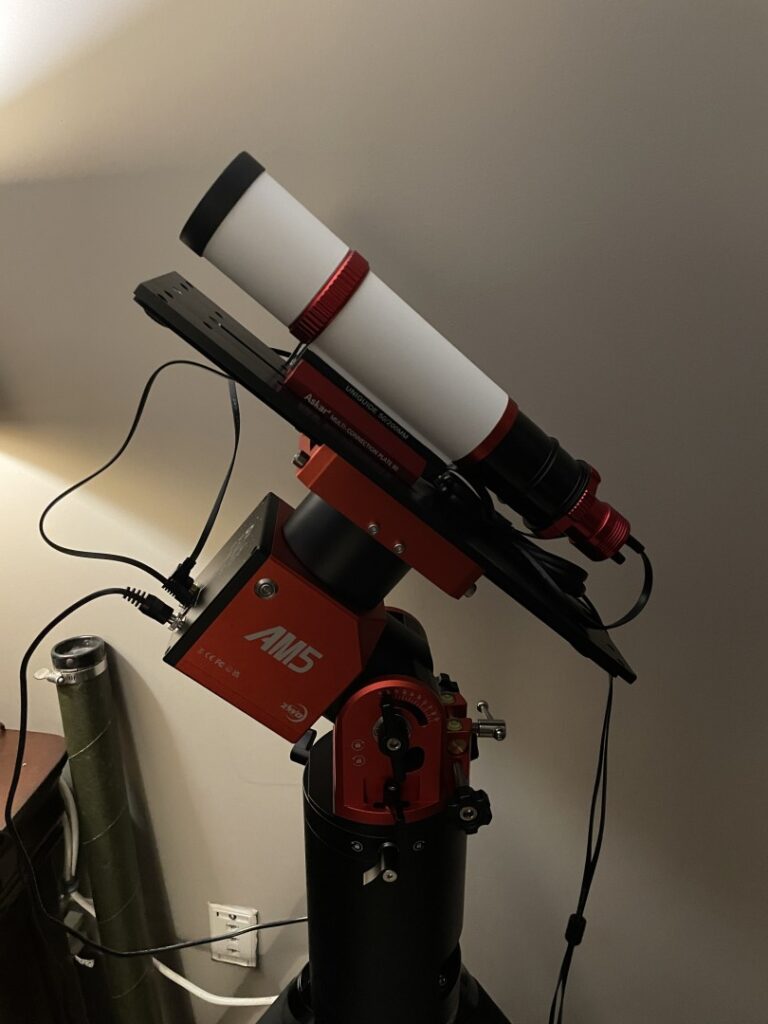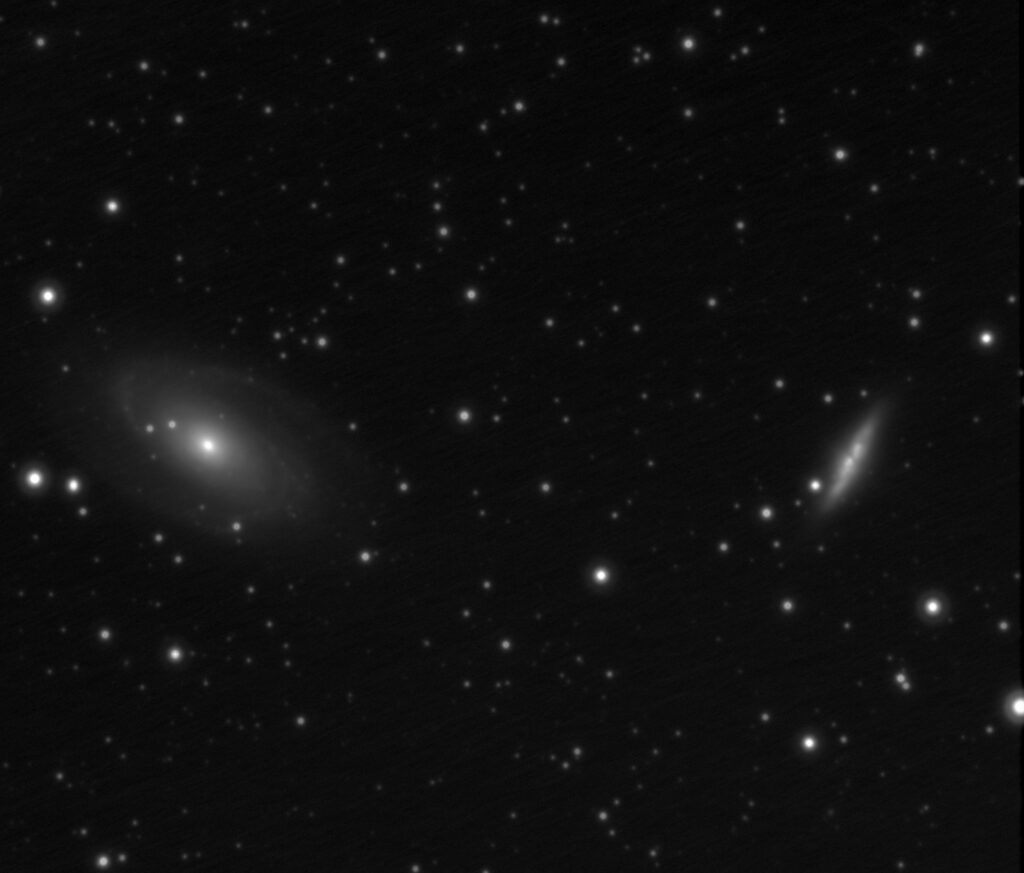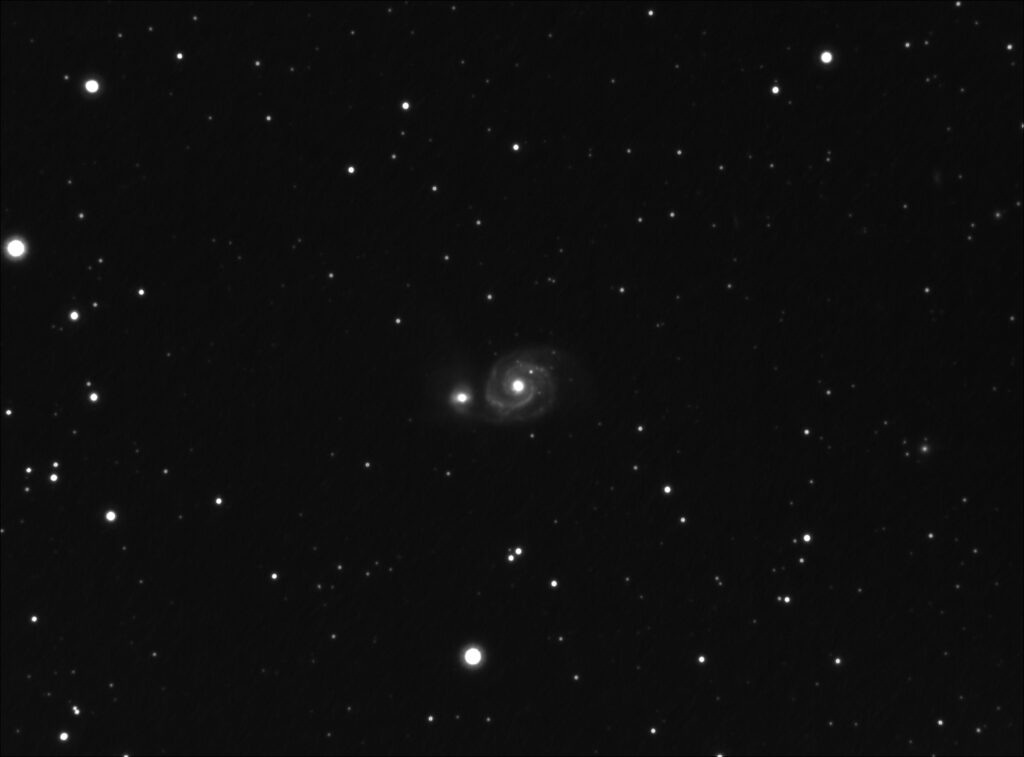
Galaxy Season
This time of year is when many interesting celestial objects start to set too early in the night to take good pictures of. Liz’s favorite, the Pleiades, is already below the tree line by the time the sun begins to set, and is below the horizon by the time it is dark. My own favorites, Andromeda and the Orion constellation, are not far behind. That is why spring is known among ameteur astronomers as “Galaxy Season”
Galaxies, with few exceptions are very tiny in the night sky. Most of them extremely far away. As a result, you need a scope that can really magnify them into something that is visible and interesting to photograph. Unfortunately, my setup is much simpler than most would choose this time of year.
I still don’t have a dedicated astronomy camera. I struggled through a few photo shoots using my DSLR camera, and decided that it was not up to such challenging targets. Wanting not to put this hobby on hold for a new telescope and camera, I decided to try something a little creative. The one camera that I have that is sensitive enough is my guide camera.

Guide cameras are not designed for photography. They are made to take pictures of stars to make sure your main camera stays on target. My guide camera is only black and white. It also takes a tiny resolution photo, barely bigger than one megapixel. Still, it is what I have, and a good way to learn.
M81 & M82

These two galaxies lie about 12 million light years away from us. The larger galaxy M81 is so massive, that it is beginning to tear the other apart. The gravitational interactions between the two are not very well understood, but the effect is clear in better images than mine. Use the Header link to read more about these on NASA’s official site, along with their excellent photograph.
M101

This one in my opinion is the best of the galaxy photos that I have taken so far. The structure of the arms is clearly visible in a way that my others are not as good. Follow the link in the heading to see the incredible image that NASA captured. I am excited to revisit this target over the years as I gain more experience and better equipment.
M51

This galaxy pair is one of Liz’s favorites. Unfortunately it is too distant, and too dim, for us to see with our own eyes. But here it is clearly visible with both the spiral structures as well as the dwarf galaxy that is gradually being integrated into the grand spirals.
I am well aware that these are not the most impressive photos that have ever been taken of these galaxies. Indeed, they are barely worth sharing. But I was surprised at the quality that I could get out of the equipment that I am using. This was an encouraging endeavor. I learned a lot about how to set up the equipment, and even more how to automate that equipment to photograph all night unattended.
The challenge of this hobby is going to demand my patience, concentration, and persistence. Other astrophotographers are right to warn newbies of the difficulty of the hobby, but it makes the feeling of accomplishment that much more rewarding.